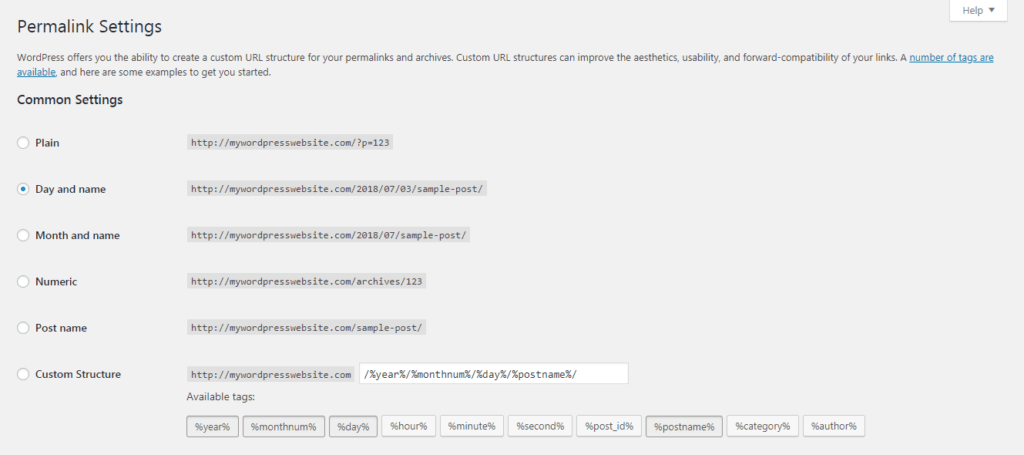How to Optimize Your WordPress Website’s SEO

Contents
No matter what type of website you run, it’s essential that you focus on its Search Engine Optimization (SEO). WordPress comes with many powerful SEO tools, as well as a wide variety of available plugins. That means you may not be taking full advantage of your site’s potential reach.
Fortunately, optimizing WordPress for SEO isn't as hard as you might expect. It will take a little time and patience, but as a result you can rank higher in search results, boosting your organic search traffic. What's more, improving your SEO can give you an edge over your competitors.
In this article, we’ll walk through a number of key SEO techniques for your WordPress website. Let’s get moving!
Why Search Engine Optimization (SEO) Is Important
Before we introduce our SEO optimization tips, let’s take a few minutes to talk about why this subject is so important. SEO is a group of techniques used to help your site rank higher in search engines such as Google.
This is crucial to helping improve your site’s growth and visibility. For example, one study found that the number-one spot in search engines gets 53% of all organic search traffic. If your pages rank poorly, you're likely to miss out on a lot of potential visitors.
However, with more businesses becoming aware of SEO’s usefulness, the field is growing crowded. This makes it even more important to get the ‘little things' right. Fortunately, WordPress has many built-in tools and plugins available for SEO optimization.
How to Optimize Your WordPress Website’s SEO (5 Key Tips)
In the rest of this article, we’ll review five basic tips to boost your WordPress site’s SEO. Plus, we'll introduce some handy solutions that can make your job a lot easier.
1. Use Consistent Permalinks
Have you ever tried to visit an old bookmark and found that, although the site was still active, the link no longer worked? Permalinks are permanent links to your site’s content, such as its blog posts and pages:

It’s crucial to keep these consistent, so internal and external links to your site remain active. Not only do permalinks enable visitors to navigate your site; they're also very beneficial for SEO.
By default, WordPress permalinks follow a format that looks like this: sitename.com/year/month/day/blog-post-title. These are often called ‘ugly permalinks', because they tend to be long and messy.
It’s much better for SEO to use ‘pretty' links that are short and descriptive. You can choose your permalink structure in your WordPress settings, and use Pretty Links to optimize your URLs further.
2. Add Keywords to Your Permalinks
Keywords are terms that people search for on sites like Google. It’s important to use keywords within not just your content, but your links as well. That way, search engines are more likely to rank your pages highly in relevant searches.
In particular, you'll want to consider using long-tail keywords. These are short phrases that tend to have less search traffic, but produce more specific results. They also tend to have a higher conversion rate.
You can find appropriate keywords by using a tool like Google Keyword Planner. Then, select the Permalink section in the right-hand sidebar for any post or page:

There, you can create a custom link that incorporates whatever long-tail keyword is most relevant to the content.
3. Solicit Backlinks
Another important SEO technique is building backlinks. These are links on other websites that lead back to your site. They can have a positive effect on your search rankings, because if lots of sites are linking to yours, search engines tend to assume that your content is high-quality.
Some of the best ways to build backlinks include guest posting on other high-value sites, and leaving informative comments on relevant blogs. You can also use Pretty Links to help encourage more backlinks.
By default, most social media networks add a ‘nofollow' attribute to links, meaning that they don’t count as backlinks. However, URLs created with Pretty Links will always have the ‘follow' attribute unless you specify otherwise. This means that all of your social media content will work towards boosting your site's SEO.
4. Block Spam Comments
Next up, you can also optimize your site by blocking spam comments. These are annoying for your visitors, and can have a negative impact on your site's professionalism. Plus, spam comments can actually hurt your SEO.
Malicious sources often use comments as a vehicle for backlinks. Having too many links to low-quality sites harms your page rankings, whether or not you added those links personally. Therefore, blocking unwanted links is crucial to preventing spam from overtaking your site and harming your visibility.
Fortunately, it’s easy to block spam comments using the Akismet or Jetpack plugins in WordPress. If you have a personal site with no paid ads or e-commerce activity, Akismet is an excellent free option. For business sites, Jetpack is a cost-effective premium solution that includes automated spam filtering.
5. Build an XML Sitemap
Last but not least, generating an XML sitemap is an easy way to boost your site’s SEO. This is essentially a list of all the pages on your site, along with information about how they're interrelated.
A sitemap helps search engines easily scan your pages, and gather the information they need to rank your content accurately. Creating one from scratch would be challenging, but there are plenty of solutions that can do it for you.
For instance, the free versions of Jetpack and Yoast SEO come with XML sitemap tools. This means that adding a sitemap to your WordPress site only takes a few minutes. After that, it’s important to submit your sitemap to Google Search Console, so Google will know where to find it.
Conclusion
Improving your site’s SEO can be crucial to its success. The good news is that there are many simple steps you can take to optimize a WordPress site for SEO, and attract more visitors.
As we've shown, five easy ways to boost your WordPress site’s SEO include:
- Using consistent permalinks
- Adding long-tail keywords to your links
- Building backlinks
- Blocking spam comments
- Creating an XML sitemap
Do you have any questions about optimizing your WordPress site for search engines? Let us know in the comments section below!
Cathryn Cade
May 31, 2019
Thanks for this informative article. I have long known I need to do this, but haven't had a clue how. Still not looking forward the task, but at least I have guide-posts now.
Sven Özel
June 20, 2019
I've found particulalry useful to learn that Yoast SEO creates an XML sitemap, that is a real time/life saver! Thanks.